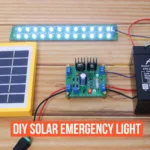With electricity prices rising and frequent power cuts across India, solar energy is now one of the most practical solutions for homeowners. If you’re considering installing a solar power system, one of the first decisions you’ll face is whether to choose monocrystalline or polycrystalline solar panels.
These two types are commonly used in residential solar systems in India. Both have their pros and cons, depending on your location, budget, and energy needs. This guide will help you understand the key differences, so you can make the best decision for your home.

Quick Comparison Table
| Feature | Monocrystalline | Polycrystalline |
|---|---|---|
| Efficiency | 15% to 23% | 13% to 16% |
| Price (Per Watt) | ₹70 – ₹105 | ₹52 – ₹70 |
| Lifespan | 25 to 40 years | 25 to 35 years |
| Appearance | Sleek black | Bluish and speckled |
| Temperature Tolerance | High | Moderate |
| Space Requirement | Less | More |
| Best For | Limited roof area | Large rooftops, budget buyers |
What Are Monocrystalline Solar Panels?
Monocrystalline panels are made from a single piece of pure silicon crystal. These are produced using a high-precision process called the Czochralski method. As a result, they are more efficient and expensive compared to other types.
Features:
- Uniform black or dark blue color
- Higher energy output per square foot
- Space-saving and efficient
- Long life span (25–40 years)
- Great for rooftops with limited space
What Are Polycrystalline Solar Panels?
Polycrystalline panels are made by melting multiple fragments of silicon together. The production process is simpler and more cost-effective.
Features:
- Bluish, speckled appearance
- Lower efficiency compared to monocrystalline
- More affordable option
- Lifespan of 25–35 years
- Requires more roof space to generate the same output
Also Read Best Solar Battery for Residential Use in India (2025)
Efficiency Comparison
Efficiency measures how well solar panels convert sunlight into usable electricity.
- Monocrystalline panels have an efficiency range of 15% to 23%.
- Polycrystalline panels have an efficiency range of 13% to 16%.
This means monocrystalline panels generate more power in less space, which is ideal for homes in cities like Mumbai, Delhi, or Bengaluru where rooftops are small.
Cost Comparison in India (2025)
| Type | Price per Watt (INR) | Approximate Cost for 1kW |
|---|---|---|
| Monocrystalline | ₹70 – ₹105 | ₹70,000 – ₹1,05,000 |
| Polycrystalline | ₹52 – ₹70 | ₹52,000 – ₹70,000 |
If you are looking for a high-efficiency system and have a flexible budget, go with monocrystalline panels. For cost-effective solar installation, polycrystalline panels are a good choice.
Performance in Indian Climate
India has a range of climate zones, from hot and dry in Rajasthan to humid in Kerala. Solar panel performance can vary with temperature.
- Monocrystalline panels perform better in high temperatures and during cloudy weather.
- Polycrystalline panels are suitable for moderate climates but may see a slight dip in efficiency in extreme heat.
In hot states like Gujarat, Rajasthan, and Telangana, monocrystalline panels give better output per unit of space.
Durability and Lifespan
- Monocrystalline panels typically last 25 to 40 years with a degradation rate of around 0.3% per year.
- Polycrystalline panels last around 25 to 35 years and degrade at about 0.5% to 0.8% annually.
Both types are reliable and come with warranties of 20–25 years from most Indian manufacturers.
Appearance and Aesthetics
If the visual look of your solar system matters to you:
- Monocrystalline panels look sleek and have a uniform black color.
- Polycrystalline panels look more reflective with a mix of blue tones.
Monocrystalline panels are preferred for modern houses where aesthetics are important.
Environmental Impact
- Monocrystalline panels require more energy and materials to manufacture but produce more energy over their lifetime.
- Polycrystalline panels are easier to produce and involve less waste, but you may need more of them for the same energy output.
Both options are much better for the environment than fossil fuels.
Frequently Asked Questions
Q1: Which panel type is best for Indian homes with small rooftops?
A: Monocrystalline panels are more efficient and take up less space, making them better for homes with limited roof area.
Q2: Are polycrystalline panels reliable in Indian weather?
A: Yes, they are durable and suitable for most Indian climates, though they are slightly less efficient in very hot weather.
Q3: Is it possible to mix both types of panels in one system?
A: It is not recommended because the electrical characteristics differ. This can reduce the overall performance of your system.
Q4: Do both types need regular maintenance?
A: Yes. Basic maintenance like cleaning dust and checking for damage is needed, regardless of the panel type.
Q5: Which brands in India offer both types?
A: Leading brands like Tata Power Solar, Vikram Solar, Waaree, and Adani Solar offer both monocrystalline and polycrystalline solar panels.
Final Thoughts: Which Panel Type Is Better for You?
Choosing between monocrystalline and polycrystalline panels depends on your personal needs:
- Choose monocrystalline if you have limited roof space, want higher efficiency, and are willing to spend a bit more.
- Choose polycrystalline if you’re on a budget, have a spacious rooftop, and want a good balance between cost and performance.
In 2025, solar technology in India has improved in quality and affordability. No matter which panel you choose, switching to solar power is a smart move that offers energy independence, lower bills, and a greener future.
Author- Ayush











